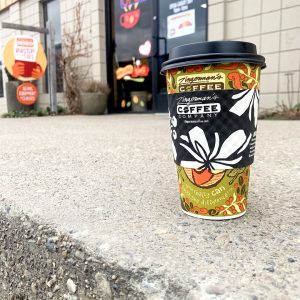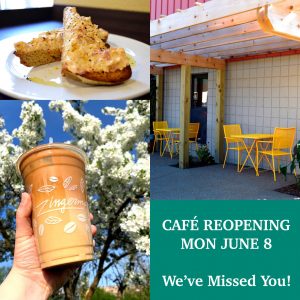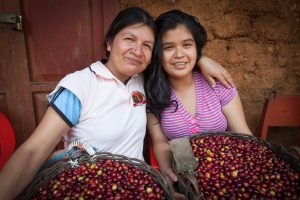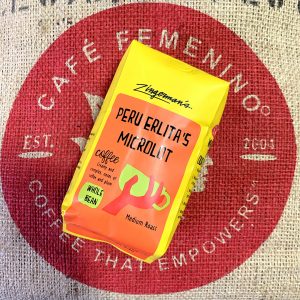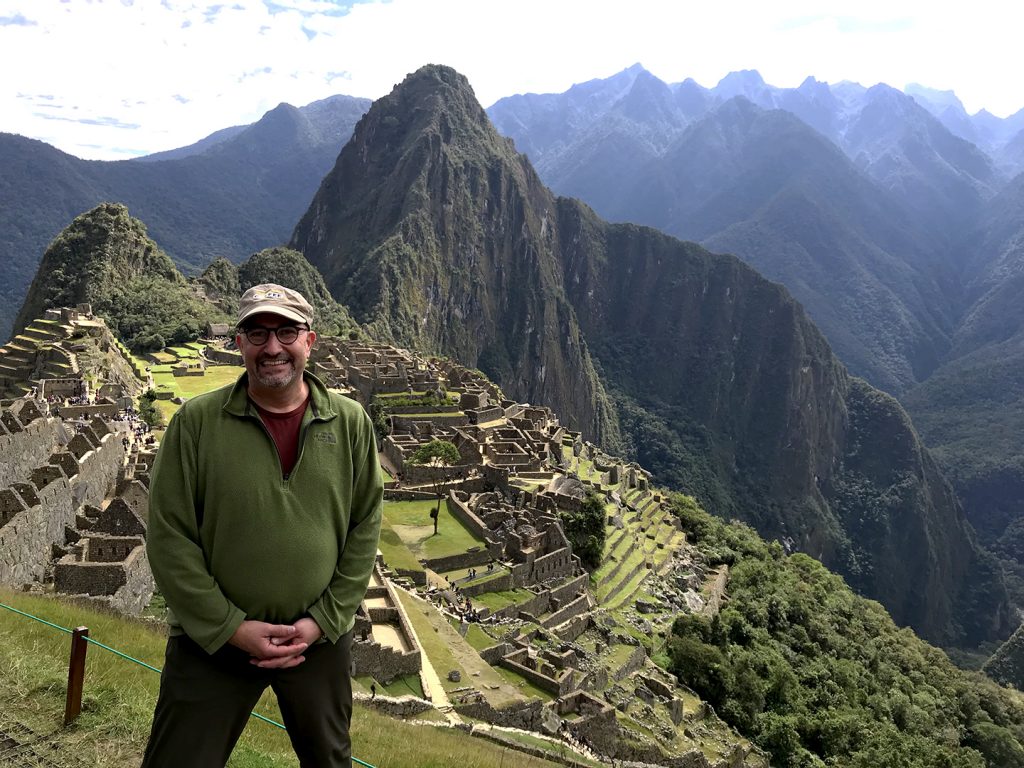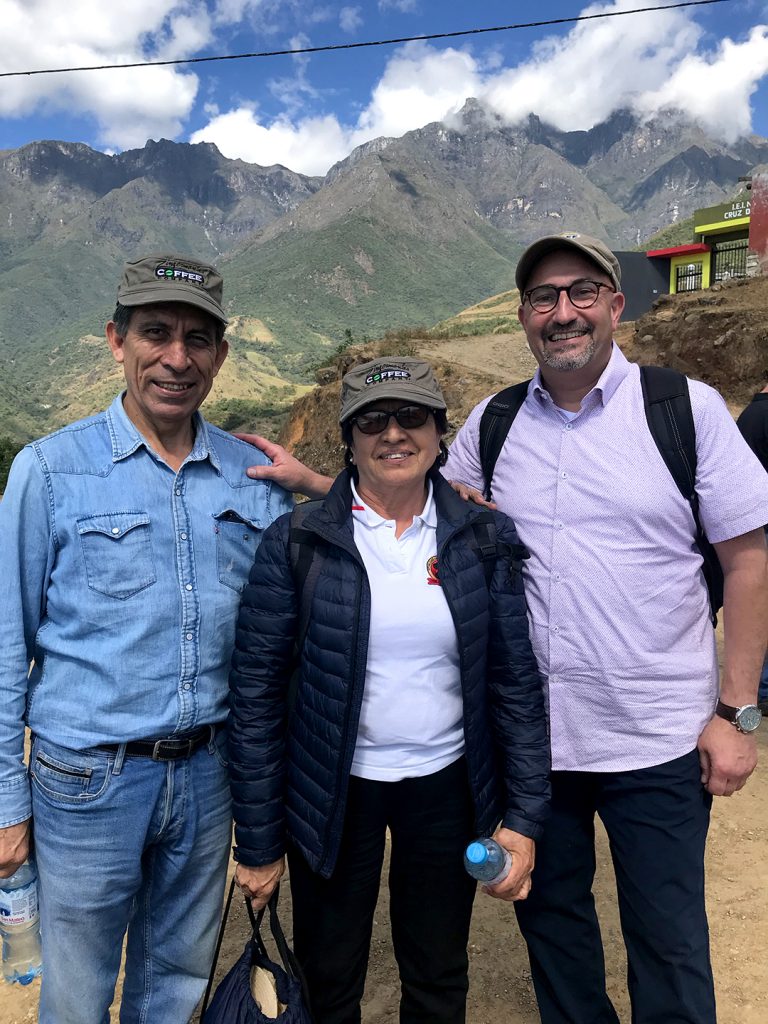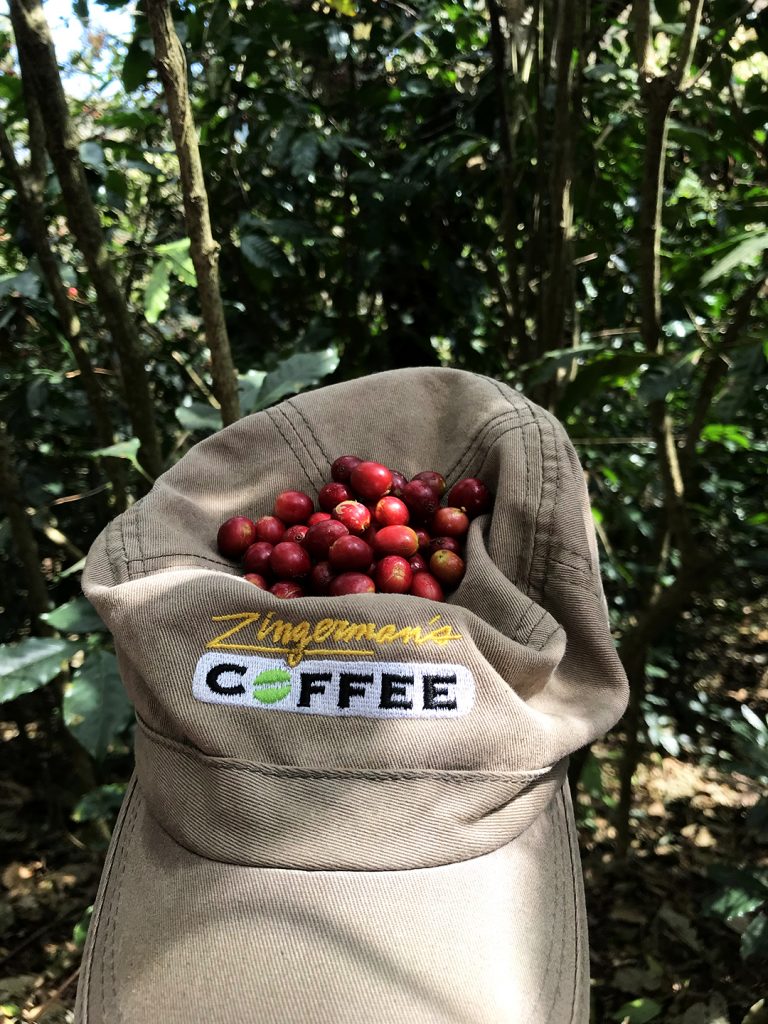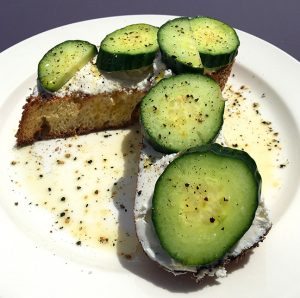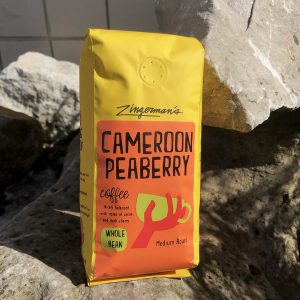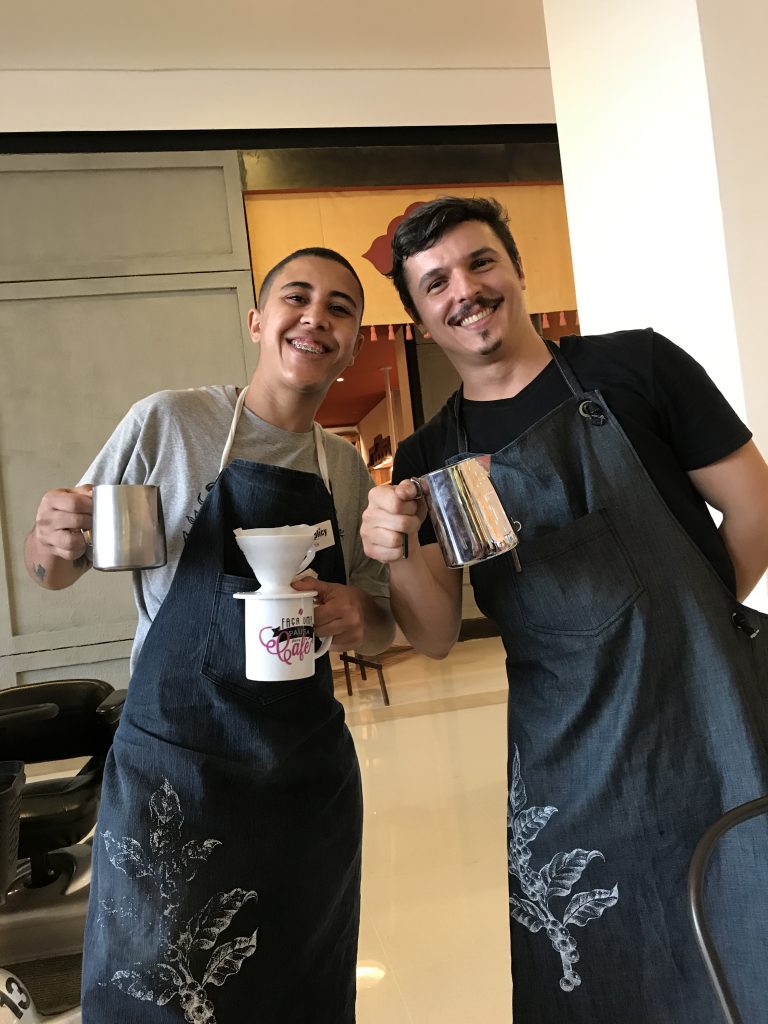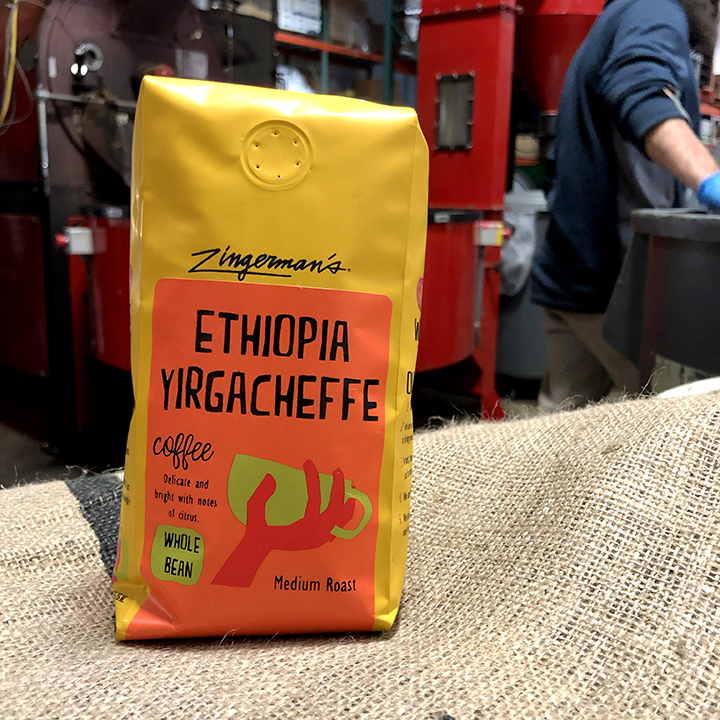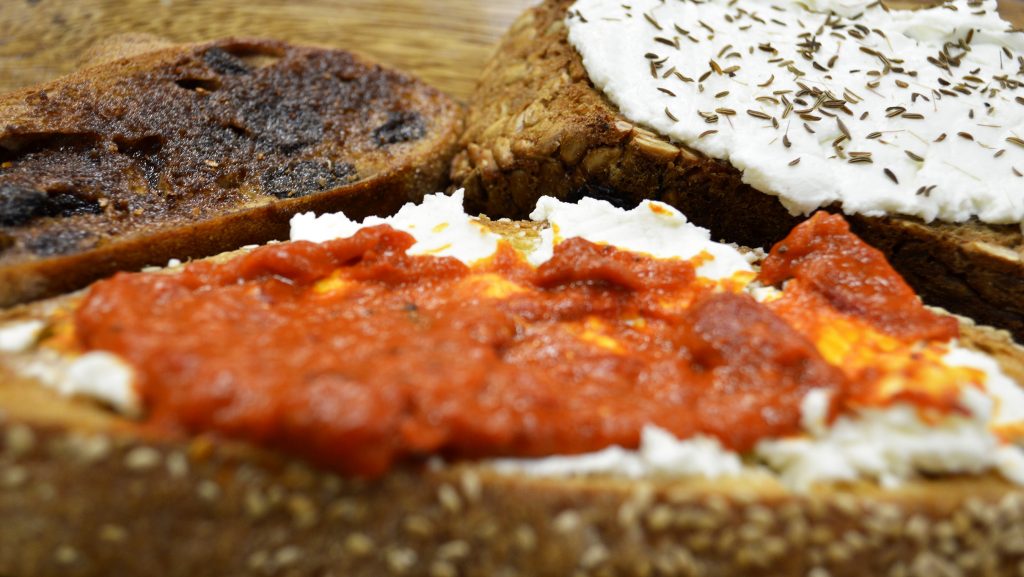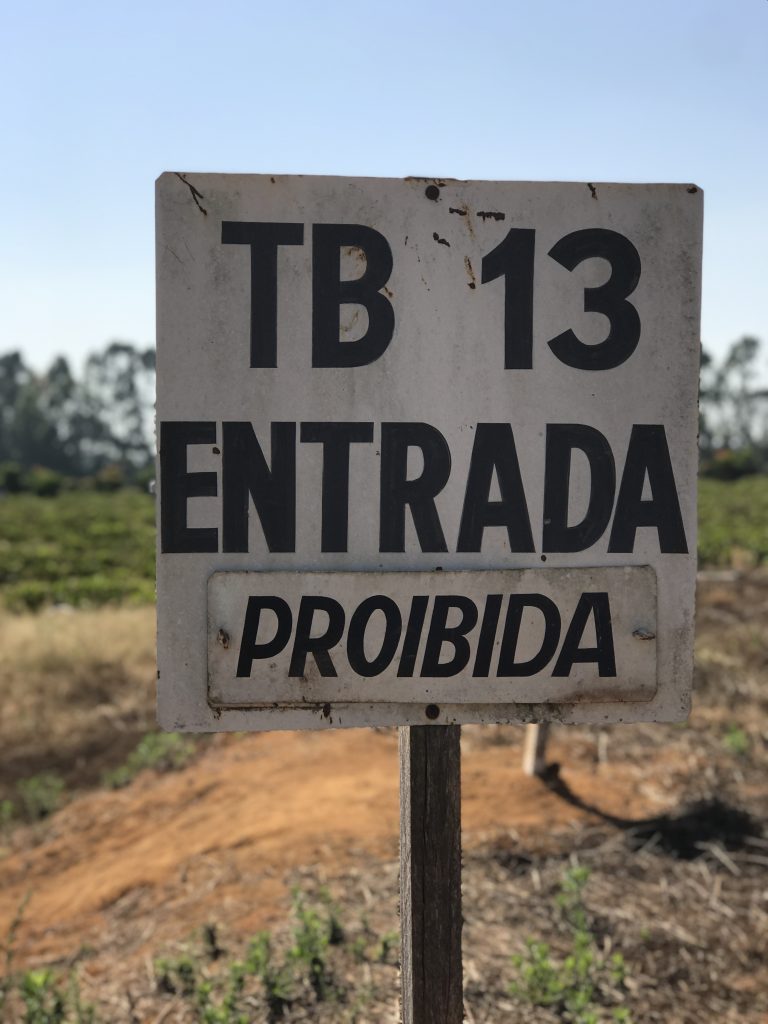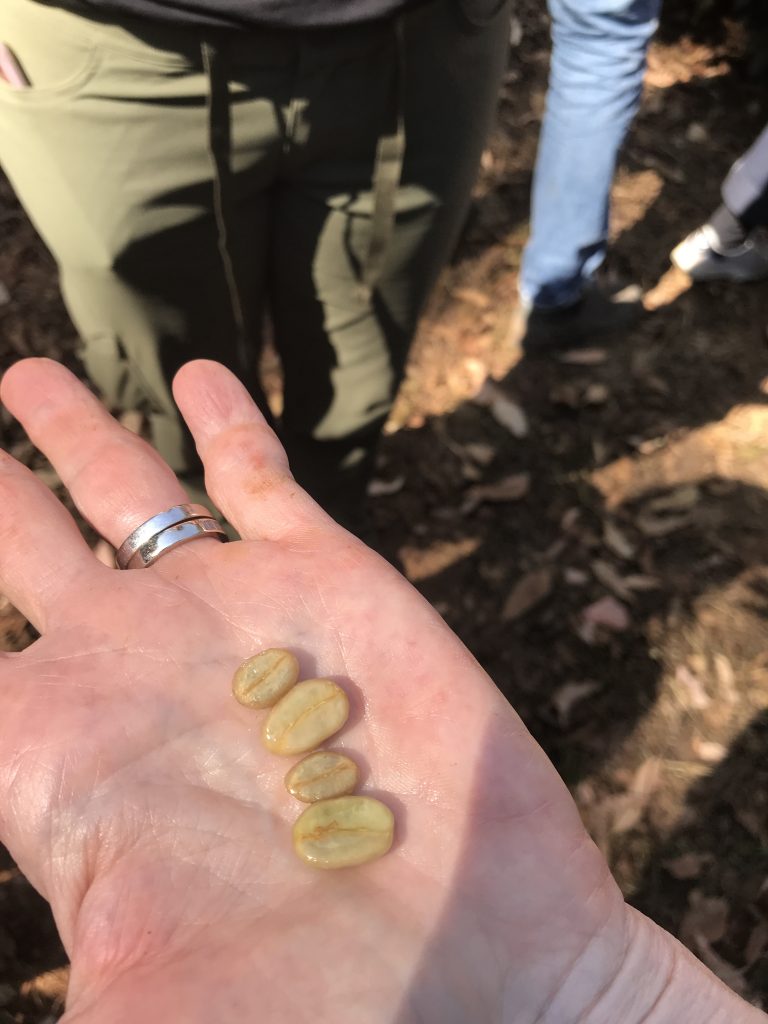Your Coffee, Curbside! 🚗❤️
We are OPEN for take-out orders, and now – to serve you better – we’re offering our coffee, curbside! 🚗
For curbside delivery…
Step 1: Give us a ring at (734) 929-6060.
Step 2: Tell us your order; we’ll let you know when it’ll be ready.
Step 3: Call us when you arrive with a description of your vehicle, and we’ll be out in a jiffy!
Step 4: Enjoy your daily cup o’ joe!
We are so grateful for your ongoing support, and look forward to serving you in our cozy cafe in the near future. ❤️
We are Open and Prepared: A Letter to Our Guests from Zingerman’s Coffee Company
Updated 6/5/2020
A Note About COVID-19
As you may already know, Governor Whitmer is allowing restaurants to reopen to the public starting Monday, June 8. Our highest priority is your safety and our staff’s safety. To that end, we have a few guidelines for enjoying our cafe space starting on Monday June 8th:
- We welcome parties no larger than 4 folks to dine-in.
- If you anticipate your stay exceeding 30 minutes, please enjoy your coffee (and our WiFi!) from our patio or your vehicle.
- Please continue to wear a mask while in line (we have one for you if you’re without!), and maintain social distance in line (we’ll have markers to help with that) and at our tables.
- Please don’t move tables or chairs – they are set up intentionally!
- In observance of the state order, our dining area is at 50% capacity; tables and chairs are distanced accordingly
- Our staff sanitizes surfaces every hour
- Bathrooms are inspected and sanitized every hour
- To-go cups and containers are continuing to be used in place of dish ware or silverware
- Our staff will continue to wear masks and gloves while serving you
THANK YOU in advance for helping uskeep a good thing goin’, safely. ❤️ Not ready to chill in our cafe? No worries! We are still offering curbside delivery, contact-free pick-up, and home delivery!
Peruvian Coffee From Café Femenino
Female farmers cooperative offers up superb coffee
Ari Weinzweig, CEO & Co-Founder of Zingerman’s
Back in 2004, Isabel Uriarte Latorre co-founded Café Femenino, an organization dedicated to empowering women on the front lines of the coffee industry. Very much like the folks at Ziba in Afghanistan that I wrote about earlier this year, she’s built the business to support women—financially, spiritually, and socially—in the work world. The folks at Café Femenino share that,
Women in remote and rural coffee communities face a host of challenges that keep them trapped in poverty. Many of these isolated women live in male-dominated societies and have very little financial control or decision-making power. Four-hundred-sixty-four women farmers in northern Peru decided to change this dynamic by separating their coffee production from the men’s. At that moment, for the first time, this group of women created their own product and income . . . to support social justice and empowerment for women coffee producers worldwide.
Erlita’s farm is near the village of Nueva York, a small coffee community in the Amazonas region of northern Peru, east of the Andes Mountains. (Intriguingly, there’s also a town Peru, New York, in the far northeast corner of New York state.) The Amazonas is a high-elevation area, typically 5,700 to 6,500 feet above sea level—ideal for high-quality Arabica coffee trees.
Does the work of Café Femenino make a difference? Steve Mangigian, managing partner at the Coffee Company made the trip down to Peru last summer. He quickly offered that, “the dynamic is completely different than traditional male-run farms.” Every article I’ve read about them details outstanding results: increased local recognition of the work the women are doing, both in the fields and on the home front; a reduction in abuse (physical, emotional, and sexual); an increase in income; more men participating in child care and housework, and upswing in school attendance among local girls. It’s hard to argue against any of that! In addition, because the female coffee producers in the area now have the potential to get a better price for their coffee, many men are signing the deeds of their land over to their wives so their coffee will be eligible for Cafe Femenino designation.
Of course, the key question is, how does the coffee taste? Steve Mangigian is particularly high on Erlita’s beans: “This coffee has so many delicious layers! On first sip, it has a deep fruitiness that reminds us of plum. It also has a rich, toffee-like sweetness and a full, creamy body.” I say, it’s pretty darned tasty! Darker than last month’s Peruvian Peaberry. Smooth, a bit of dark chocolate, maybe even like a piece of toasted Country Miche bread from the Bakehouse. The coffee has a surprisingly clean finish and modestly full mouthfeel. All the brew methods have been good, but I’m stuck on the smoothest flavor of the bunch, which I found to be Chemex.
Sip some of this great new coffee and nibble on a Bakehouse cookie—as of this month all of them are even better than ever because they’re made with freshly milled whole grain from Ferris Organic Farms in Eaton Rapids at the Bakehouse. Erlita’s Lot is available at the Coffee Company, Next Door Café, and at the Roadhouse.
Excerpt from Ari’s weekly Top 5 E-Newsletter. To stay in-the-know about things that Ari is excited about in the Zingerman’s family, sign up here!
Coffee Origin Story: Peru
Steve Mangigian, Managing Partner of Zingerman’s Coffee Company, chronicles his latest globetrotting adventure to where the coffee is grown.
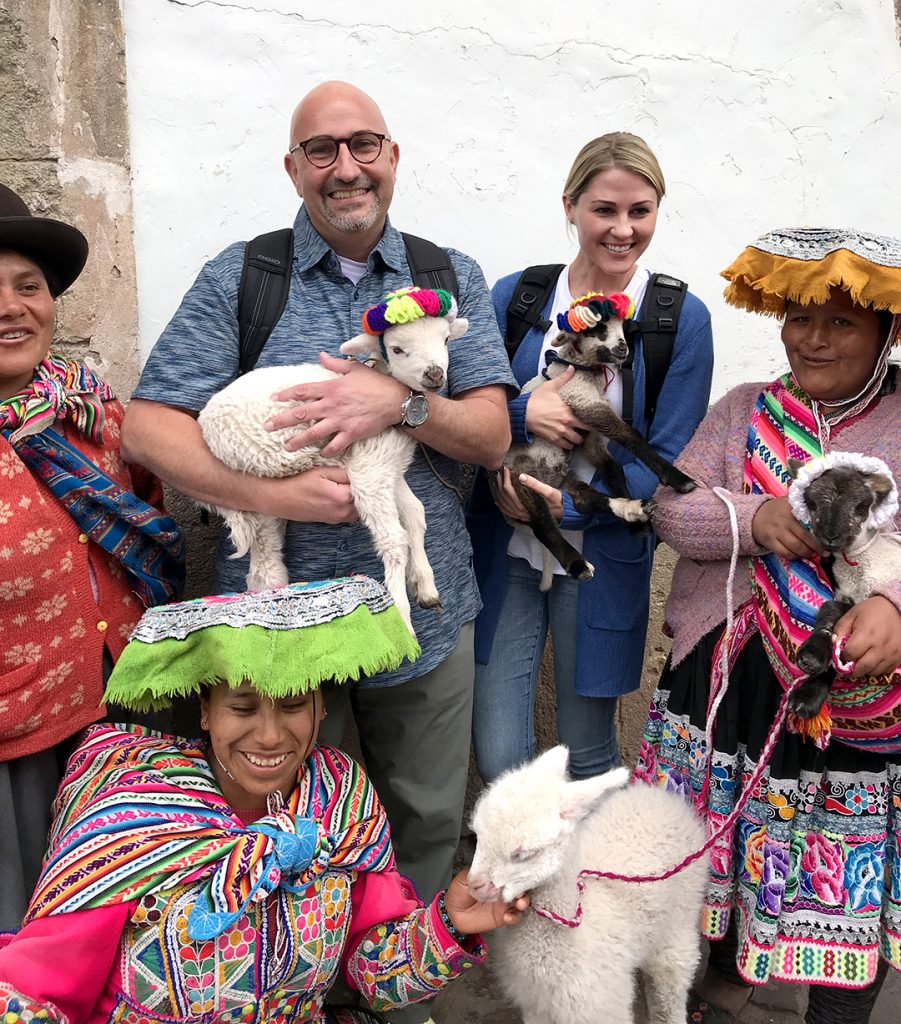
Zingerman’s Coffee Company Managing Partner Steve Mangigian, with one of the highlights of his trip!
At Zingerman’s Coffee Company, our mission is to source and roast the best coffees on the planet, and to present them to you, the coffee consumer, with as much detail as possible. That way, we can draw you into the experience of not just tasting what makes these coffees so special, but understanding the journey of the bean in a way that is approachable and accessible.
Origin travel has become a standard part of our approach to sourcing great coffee. We regularly receive samples from the importers we work with, but it’s only after we find a “keeper” that we will consider traveling to that origin.
Typically when I travel to origin, I am all about business; I endeavor to complete my work and then get back to the States. There is always work that needs to get done back home! Travel does not inspire dramatic romanticism in me as it does for others. I have never traveled well internationally, so the prospect of traveling to new and different places never appealed to me. Coffee origin travel is hard work, probably the hardest of all the work we do at Zingerman’s Coffee Company.
Every trip to origin – whether it is the first time or tenth time – always feels like a brand new experience. Seeing different cultures and learning new things keeps me captivated, even after close to a decade and a half of traveling. Visiting the most remote areas of the world in search of high-quality coffee – and finding it – makes it all worthwhile. This trip to Peru was no exception.
PERU
When the opportunity came to visit Peru – which would be a first for me – I considered whether or not I should accept it. When trips to new countries present themselves, language barriers, access to food and water, and cultural differences need to be considered. Upon reflection, I realized I tend to favor visiting countries I have navigated many times before, like Brazil and Costa Rica.
Peru is home to a section of the Amazon rainforest and Machu Picchu, an ancient Incan city high in the Andes mountains. The region around Machu Picchu, including the Sacred Valley, Inca Trail and colonial city of Cusco, is rich in archaeological sites. On Peru’s arid Pacific coast is Lima, the capital, with a preserved colonial center and important collections of pre-Columbian art.
In the end, an opportunity to visit Machu Picchu (one of the wonders of the world) is what made me decide to take the trip. Although I have not studied this legend very much, the stories told to me intrigued me to experience it first hand.
MACHU PICCHU
So, off I went to South America. Detroit to Lima to Cusco via Air Lima, then a train ride and, finally, a bus trip. At about 11,000 feet above sea level, Machu Picchu is not the easiest location to travel to and unless you frequent high altitudes, altitude sickness pills are a must. Hotels in the area even cater to the altitude challenge by providing pure oxygen and tea prepared with the leaves of the coca plant to offset symptoms.
Photos only capture one dimension of the beauty of Machu Picchu. We hiked the entire area, traversing challenging terrain to see Machu Picchu’s full wonderment. The intricacy of the architecture, the knowledge of what the site once was, and the labor it took to accomplish truly incites the imagination.
After about four hours of exploration, it was time to make our way back. I would be remiss if I did not mention that we left our hotel in Cusco at 4 a.m. and did not return until approximately 11 p.m. that night. Suffice it to say, the day trip was worth the time and effort.
When the Cusco leg of our trip ended, it was time to travel almost 1,200 miles north to coffee country, where we would spend the coming week. We arrived in Chiclayo, a bustling city with a population of about 700,000 and some of the most outlandish traffic and driving I have ever witnessed. Chiclayo, located in northeast Peru, served as the center point of our daily travels, providing relatively easy access to the four communities we’d visit across the mountainous Lambayeque region:
Day 1-Corral de Piedra Cruz De Mayo, Colaya
Day 2-Tallapampa
Day 3-Villa Rumi
Day 4-Aspro La Florida, Agua Azul
Each day started early in the morning, accompanied by a caravan of visitors travelling along with us. It took us four to five hours one way to get to each daily destination, which meant eight to ten hours on the road every day, varying between sea level and 4,000-7,000 feet above sea level. On average, the drive along paved roads would last over an hour and then, the rest of the trek took place on dirt roads plagued by ruts which seemed to swallow our vehicles as we traversed up the narrow, steep paths. Along the way, we saw breathtaking scenery of some of the most beautiful landscapes and waterfalls with vistas. We would ascend above the clouds, seeing nothing but never-ending mountain ranges.
CAFÉ FEMENINO
During our stay in Chiclayo, we were greeted every day by our hosts Isabel Uriarte Latorre and her husband Victor Rojas Diaz, owners of the exporting company, Proassa, which exports coffee to Organic Products Trading Company (OPTCO), who then imports the coffee into various coffee consuming countries.
Isabel co-founded Café Femenino, an organization dedicated to empowering women on the front lines of the coffee industry, with OPTCO. Together, they created a social business program that provides a framework for women coffee producers to gain access to their full potential through financial and social incentives. This program now operates in eight coffee-producing countries around the world.
Every community we visited on this trip had a strong group of women who not only worked the land, but owned the land. In many of my origin visits, this is typically not the case, but it’s a growing trend, particularly in developing countries. Café Femenino was developed for the purpose of empowering women who grow coffee in very isolated, impoverished, rural areas.
As the Café Femenino website states:
“Women in remote and rural coffee communities face a host of challenges that keep them trapped in poverty. Many of these isolated women live in male-dominated societies and have very little financial control or decision-making power. In 2003, 464 women farmers in northern Peru decided to change this dynamic by separating their coffee production from the men’s. In that moment, for the first time, this group of women created their own product and income. Their coffee cooperative CECANOR joined their commercial partner Organic Products Trading Company (OPTCO) to create Café Femenino—a gender-focused program to support social justice and empowerment for women coffee producers worldwide.”
Café Femenino started in Peru in 2003, and has spread to eight other coffee producing countries including Bolivia, Brazil, Colombia, Guatemala, Mexico, Nicaragua, Rwanda and Sumatra.
THE COFFEE
On day five, after experiencing these amazing communities, it was time to taste their coffee. The cupping table saw about 18 coffee samples and many were from the different areas we visited. Overall, the coffees showed a lot of promise. I have since received many samples based on this cupping exercise, and am happy to say we will be adding a Peruvian coffee to our roster of coffees!
Although this trip has ended, our journey into the coffees of Peru is really just beginning. As we explore the possibility of working with different communities within Peru, I am captivated by the hard work of the women in this country. We here at Zingerman’s Coffee Company desire to support this work in the future. The people of Peru are warm and hospitable, and the country is beautiful. I will be back!
FEBRUARY ROASTER’S PICK
This February, we are thrilled to feature a rare Peruvian Peaberry that I sourced on this trip as our Roaster’s Pick of the month. What’s so special about this coffee? To start, it’s comprised of peaberry beans, which make up less than three percent of all coffee beans. It’s grown near the Cerra Condorpuna, host to one of the largest old-growth forests in the Amazon. The altitude and ample shade of this area makes for an ideal environment for growing high-quality coffee. Peruvian coffee is hand picked and, after processing, is transported by foot or mule by farmers into town via mountainous trails. Indeed, this coffee tastes as exceptional as its origin. It will only be around for a limited time, so be sure to stop by the café or order it online through Zingerman’s Mail Order!
Curious about Coffee? Sign up for our monthly e-newsletter to be the first to know about classes, events, new coffees, and more!
English Summer Cucumber Goat Cheese Toast
Great for breakfast, lunch, a snack, or an early dinner!
Ari Weinzweig, CEO & Co-Founder of Zingerman’s
One of the great, still almost secret culinary treats of the ZCoB, I’d say, is the toast at the Coffee Company out on Zingerman’s Southside. The Coffee Company toasts bring together a lot of the best of what we do into one significant, but not overly large, meal. Artisan bread from the Bakehouse; cheeses from the Creamery; spices from Épices de Cru; Irish butter; extra virgin olive oil… really, what could be bad?!
One of my favorites of the eight different offerings on the Coffee Company’s toast menu is the English Summer. Toasted Sicilian Sesame Semolina bread, drizzled with olive oil, spread while still warm with a nice bit of the Creamery’s handmade artisan cream cheese, topped off with some of the freshly ground 5-Star Pepper blend, a little bit of sea salt, and a final drizzle of olive oil. It’s a wonderful combination of contrasts; light but still substantial; savory but with a subtle underlying hint of sweetness from the cream cheese and the sesame seeds on the bread. Vegetables, bread, and protein together on one fine toast set! All the way around, it’s a great way to eat.
It’s been about 18 months since we started doing toast and I guess the secret must be starting to get out because when I was there yesterday for a meeting, there were probably a dozen folks eating one of the very tasty toast combos. If you want to make a more complete meal of it, grab a salad from the Bakeshop or the Cream Top Shop. Sit inside or out, take a deep breath to get grounded. Appreciate the visual loveliness of the toast, then take a bite. Enjoy!
Excerpt from Ari’s weekly Top 5 E-Newsletter. To stay in-the-know about things that Ari is excited about in the Zingerman’s family, sign up here!
Cameroon Peaberry Coffee
An elegant new arrival from the highlands of Cameroon
Marvelously delicate Coffee of the Month for March
Ari Weinzweig, CEO & Co-Founder of Zingerman’s
One of the things I love about working with single-origin coffees is that I feel like I get to travel the world regularly without really having to leave home! In the last year, we’ve featured Uganda, Costa Rica, Brazil, Guatemala, Honduras, and Ethiopia. This time, the coffee of the month comes from a country few Americans will ever travel to, but that, of course, has a fascinating culture and history. Cameroon! It’s the only country in West Africa that has the altitudes required to grow great Arabica coffee like this (most all African coffees are from the East and Central parts of the continent). The country is often referred to as a microcosm of Africa because of its geographic diversity—everything from beaches to mountains, deserts to rainforests, all in 200,000 square miles. There are two distinctly Cameroonian styles of music—makossa, which comes from the cities, and bikutsi. It has about 250 different regional languages and uses both English and French as national languages as well. Cameroon is famous, too, for its folk wisdom. I love this beautifully telling Cameroonian saying: “No matter how fast a man is, he cannot outrun his shadow.”
This particular Cameroon coffee is a peaberry—those wonderful genetic mutations that manifest as small, “single” coffee beans rather than the usual “split bean” we see 95 percent of the time. The coffee comes to us through a direct trade program that works hand-in-hand with farmers in the regions of Oku and Mbessa to provide training and technical assistance, especially in organic growing, and helps the farmers get their beans to market. It’s got a nice cocoa-iness, almondy, toasted sesame, almost like a bold tannic black tea. If you can’t decide between strong tea and a cup of coffee, this one might just really hit the spot! It’s savory and succulent, mouth-watering, maybe a bit magical! Really nice after dinner, especially after a bit of a spicy meal. It’s definitely an up-and-coming star in the coffee world. Emily McIntyre, writing in Fresh Cup,” advised us all to, “Mark Cameroon specialty coffee in your minds. You’ll be hearing a lot more about it in years to come.” This month’s offering is a chance to get out in front of the curve! I’ve been enjoying it daily since the first of the month!
You may not be able to outrun your shadow but you can sure get over to the Coffee Company, Deli or Roadshow to grab a cup while supplies last!
Excerpt from Ari’s weekly Top 5 E-Newsletter. To stay in-the-know about things that Ari is excited about in the Zingerman’s family, sign up here!
New Crop, Traditional ‘Spro
Fine-tuning Zingerman’s Espresso Blend #1, Year After Year
Steve Mangigian, Managing Partner
Zingerman’s has been working with Daterra Estate for 15 years since the inception of the Coffee Company. Our partnership with Daterra is a testament to what the term “relationship coffee” is all about. From our days as a micro-roaster in the corner of the Zingerman’s Mail Order warehouse back in 2003, and through the sizeable growth we have seen since, our partnership has grown as we have grown. The strength of the relationship starts on the farm’s cupping table.
Every year, I trek down to the farm during the harvest season to select the varietals which make up our Espresso Blend #1 coffee.
It’s quite the journey to get to the there which includes a connection in the states as well as 2-3 connections in Brazil culminating in a three hour car ride to the farm. From my front door to the gate of the farm, it’s about an 24-28 hour trip, daunting to any seasoned traveler. But, WOW, is it worth it!
How I spend my time at the farm has often varied. In past years, part of my time was spent touring the farm (which, is actually split into 3 farms, and from there 300 “mini” farms). Nowadays, virtually all of my time is spent in the Daterra cupping lab, experimenting with different blends. It starts with tasting every coffee the farm has harvested (sometime up to 30 varietals) then narrowing down “finalist” coffees that I feel are either tasting superior this year or get us to our desired mark of producing a traditional northern Italian style espresso. I then prepare individual coffees as shots of espresso and play with different coffees to blend to the outcome we are looking for.
In Brazil, coffee primarily is an export – historically there was no real culture behind it, but a barista culture catching on there as we have it here in the States.
Why go through all this year after year? Well, for one, it’s really fun. Though, more importantly the Espresso Blend #1 is an important coffee for us, as it makes up 30% of our coffee sales! It’s crucial that we taste (“cup”) the individual varietals every year, as each harvest brings distinctive, and sometimes surprising, flavors for us to consider – and it’s our goal to make sure that the blend has a consistent profile, year after year. The result? We aim for an espresso that is syrupy, sweet, velvety, full-bodied, and a little nutty.
I’m more excited than I ever have been for this year’s blend, which will be comprised of 100 percent “natural” processed coffees, meaning the coffee cherries were dried whole, with the fruit still surrounding the bean. The blend hits our mark when brewed as an espresso, but it tastes exceptional as a brewed coffee, too. It has caramelly sweetness and notes of cocoa in the body. Overall the brew is smooth, balanced, and lingers on the palate.
Next time you stop by the cafe, order an espresso (we serve ‘em with delicious & adorable espresso shortbread star cookies from our friends next door at the Zingerman’s Bakehouse!) and enjoy it as the Northern Italians do – standing at our bar-side table. For comparison, be sure to grab a bag of Espresso Blend #1 for home (we can grind the beans for you if you don’t have a coffee grinder at home). Let us know how you prefer it!
Curious about Coffee? Sign up for our monthly e-newsletter to be the first to know about classes, events, new coffees, and more!
Ethiopia Yirgacheffe
A captivating coffee of the month!
Ari Weinzweig, CEO & Co-Founder of Zingerman’s
Ever since I started paying attention to, and appreciating, the flavors of regional beans, the nuances of various roast levels, the variations of crop years, and the other elements that make up an exceptional cup, Ethiopian coffees have kept their spot at the top of my personal taste list. Their remarkable, winy, at times blueberry-like, big flavors aren’t, I know, for everyone, but they’re definitely for me. I love ’em. This one’s been brightening my days since it hit the counters on the 1st of February.
Having been to Ethiopia three and a half years ago, I see with even more certainty why the coffees are so special. Not only do they taste great, but they have a fantastic socio-cultural history as well. Ethiopia is the literal homeland of coffee. It’s where the coffee plant probably originated, and pretty surely where coffee was first consumed as a beverage. As the story goes, a young goat herder named Kaldi noticed his goats frolicking more than usual after eating the berries of a certain bush. He picked the berries and brought them to an Islamic monk who showed his disapproval by tossing them into the fire, from whence the first coffee roasting commenced. Somehow Kaldi decided to grind and brew the toasted beans and, apocryphally at least, coffee was born. Ethiopia is also the place from which Yemeni traders took coffee to Europe and the rest of the world. All of which is why coffee, quite simply, means about 88 times more in Ethiopia than it does anywhere else in the world.
The traditional accompaniment for coffee in Ethiopia? Not a croissant, not vanilla syrup, not a cookie (though that Kifli would be an amazing accompaniment). It’s popcorn. That’s right. If you order coffee in a traditional setting, say after dinner, it will come with a bowl of popcorn. And while that may seem odd, I’ll tell you that it’s delicious. Sample some topped with one of the amazing spices from the folks at Épices de Cru alongside your next cup.
This month’s roaster’s pick is a particularly lovely bunch of beans from the Yirgacheffe district. The town of Yirgacheffe is about 250 miles south and slightly west of Addis Abbaba—roughly an eight-hour drive on Ethiopian roads. It comes to us from Yirgacheffe Coffee Farmers’ Cooperative Union. It’s likely the home region to many of the first coffee trees, and the coffee does have a clarity and elegance that’s rather extraordinary. Carmelly and smooth with a bit of delicate cocoa-like deliciousness, and a slight, bright hint of citrus at the end. Everyone at the Coffee Company is talking about it. Barista Cholie Diaz loves it brewed in a Clever. I’ve been enjoying it as Pour-Over. Any way you brew it, it’s wonderful.
Excerpt from Ari’s weekly Top 5 E-Newsletter. To stay in-the-know about things that Ari is excited about in the Zingerman’s family, sign up here!
A Toast to Toast!
One-year anniversary of serving those super special toast combos at the Coffee Company!
Ari Weinzweig, CEO & Co-Founder of Zingerman’s
This week we’re celebrating the one-year anniversary of serving toast at the Coffee Company! Since I’m sitting in the coffee shop right now as I write, watching wonderful orders of incredible plates of toast delivered to customers’ tables…it’s hard to resist sticking in a toast to toast here! So toast, here’s to you! Happy Anniversary! And here’s to much more great toasting to come!
I think the eight toast offerings we’ve got at the coffee company are some of the most delicious new additions we’ve made in the ZCoB in the last year or two. All are, of course, built on a base of the Bakehouse’s marvelous bread. All have incredible toppings. (And if you don’t live in town, all can be replicated by mail ordering the ingredients and doing them at your house!)
The Miche’lle My Belle toast still makes me smile every time I have a bite. A nice substantial slice of the Bakehouse’s Country Miche warm toast topped off with a generous spreading of the Creamery’s handmade artisan Cream Cheese and a healthy grinding of that same incredibly aromatic Tellicherry Pepper #10 that comes in from Kerala in southwest India. We finish it off with a drizzle of extra virgin olive oil on the plate that you dredge the toast through before you take a bite. It all comes together to be one darned terrific piece of toast. I could eat this stuff every day!
But then there’s more…the Bulgarian toast has been the smash surprise hit—Sicilian Sesame Semolina toasted and topped with fresh goat cheese from the Creamery and Bulgarian lutenitsa (you may never have heard of it but it’s highly likely you’ll love it: a spread of peppers, eggplant and tomatoes!). Or the Portuguese toast—cinnamon raisin bread topped with extra virgin olive oil and cinnamon sugar. Or the Caviar of the South—pimento cheese on toasted Roadhouse bread! Or the English toast with cream cheese and cucumbers! Or the alliteratively and culinarily catchy Teutonic toast—the Bakehouse’s Dinklebrot (spelt bread) with cream cheese and wild Uzbek black cumin. And last, but not least, Lauren’s Sweet Heat—goat cream cheese, coffee blossom honey, and Korean red chile flakes on toasted Roadhouse bread! Makes me hungry just writing about them. Come by anytime—all these toasts are terrific for breakfast, lunch, snacks, or even an early evening meal (we’re open ’til 7).
Excerpt from Ari’s weekly Top 5 E-Newsletter. To stay in-the-know about things that Ari is excited about in the Zingerman’s family, sign up here!
Project Pacamara
Steve Mangigian
Managing Partner of the Zingerman’s Coffee Company
Zingerman’s has been working with Daterra Estate for about 15 years, since our days as a roaster in the corner of the Zingerman’s Mail Order warehouse back in 2003. Over the years, we’ve built a strong relationship that starts on the farm’s cupping table.
Every year, I trek down to visit our friends and coffee producers at Daterra Estate in Brazil, during the harvest season. The purpose of my visit is always two-fold: to taste (or, as we call it in the industry, “cup”) and select the varietals which make up our Espresso Blend #1 coffee (I’ll explain this process in a separate post – stay tuned!) to get an update on our experimental coffee plot.
It’s quite the journey to get to the farm. I always fly into São Paulo, Brazil’s most populous city, and from there, catch another flight inland to the municipality of Uberlândia in the state of Minas Gerais. From the airport in Uberlândia, it’s a three-hour car ride through the Cerrado — a vast, lush, savanna ecoregion—to the Daterra farm. From my front door to the gate of the farm, it’s about an 24-hour trip, but, WOW, is it worth it!
Daterra Estate is owned by the Pasqual family. Patriarch Louis Pasqual comes from a family that started in auto parts and tire service centers in Brazil and became the largest tire distributor in the country. As a result of that success, the Pasquals created a foundation from which they were able to give back to the country that gave them so much. They tried a few ventures—first with milk, then fruits and cattle—until they settled on coffee. At the time, there was an opportunity to bring specialty coffee to Brazil. The Pasquals allowed the farm to grow and flourish for 10 years before selling a single cherry! They truly wanted to develop something great, and invested in building up a quality farm before getting started commercially. Today, Brazil is the largest exporter of coffee in the world, and Daterra is the 3rd largest farm in the entire country.
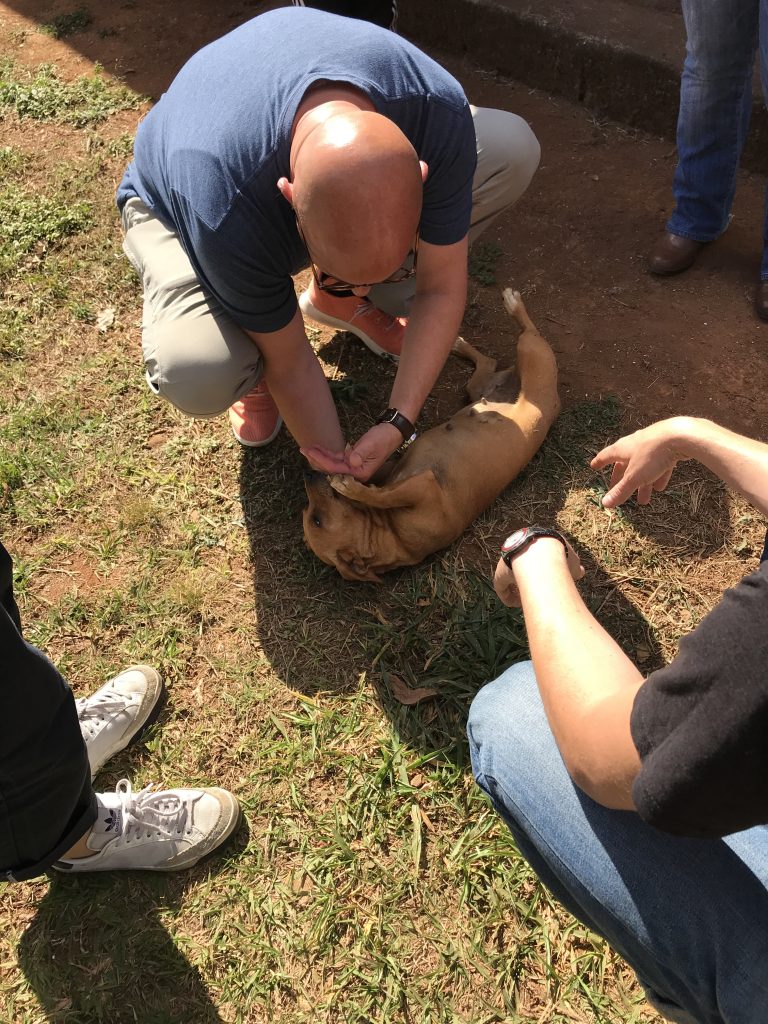
3 years ago, this pup just appeared onto the farm and took to me and has always been a highlight of my trips when i come each year. Her name is Joaquim. I tried to figure out a way to bring her here to States!
Given the scope of Daterra’s operation, the fact that they received the Rainforest Alliance’s first EVER Level-A certification for their sustainability practices is profoundly impressive. What does that look like, exactly? Well, 60% of the farm is uncultivated, meaning the natural ecosystem of the area can thrive. Also, Daterra has embarked upon research into biological activity in soils used for coffee cultivation in partnership with the University of Sao Paolo. The program, called “Bioterra”, tracks a particular enzyme shown to be a good marker of biological activity and abundance of bacteria and fungi in soil. Another initiative of the Bioterra program is intercropping of coffee lines, to promote microbial diversity in the soil. Daterra is on the cutting edge of sustainability, agronomy, and business models, and we are beyond proud to be one of their highest-level partners.
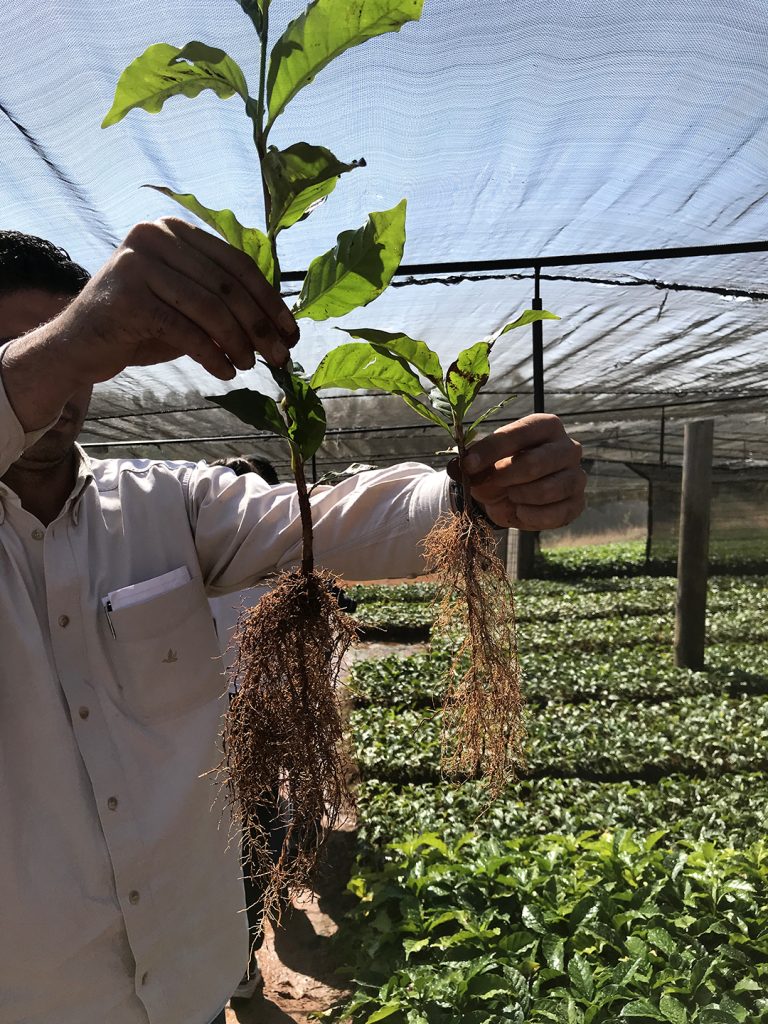
Root structure of seedlings in the nursery. During the period of time it is growing, caretakers do some pruning. The root structure of the seedling actually modifies to the pruning! Old roots fall away and new ones grow to give energy to areas of seedlings that are above the earth.
Our exciting project with Daterra Estate is cultivating the Pacamara varietal (if you’re not familiar with it, I found a great write-up here). I was struck by the immense size of the Pacamara bean during my first ever origin trip to El Salvador many years ago, and I knew I had to do something special with this varietal. Pacamara has not traditionally been grown in Brazil. Our 3-acre plot is on a high, flat plane in the Cerrado region of Brazil near the city of Patrocínio. It is amongst the best coffee producing areas in the country.
We made a commitment to the farm with the plot project we’re a part of and we go down at least once a year to check on the status of the program. This is the longest term project that the farm has ever embarked upon. This project is several years in the making and, if our plot turns out to be sustainable, it could go on for 20 years!
We have an odd varietal planted in a foreign country, and it will take longer to develop. We have an experiment within an experiment happening as well: half of the project is shade grown, the other half is indirect sunlight. At processing level, we’d like to have some of this coffee as natural, some as a pulp natural, and some washed and fermented. Probably honey as well! We’re not expecting a lot of fruit this year, but next year should be a different story. Daterra’s agronomist really likes the healthy & robust development of our seeds, optimistic about fruit our trees will produce. Flowering of the trees in September will be our next milestone marker to know what to expect in terms of cherry production.
Pacamara coffee has been described as creamy in texture with intense aroma, with a wide range of flavors that fall under ‘sweet’ or ‘fruity’ descriptors. It’s a unique cup of coffee for sure.
Daterra Estate may be the world’s most technologically advanced coffee grower. They pioneered the Penta(tm) System that ensures quality from the plants in the nursery to the shipping of the coffee beans. Our Brazilian coffees benefit from all of Daterra’s innovations including a 7-step sorting process which uses 2 different laser sorters. The finished coffee is then stored in perfectly climate controlled wooden silos and shipped to us monthly throughout the year for consistent quality year round.
Daterra’s attention to detail also extends to their care for people and the land. Their name means “from the earth”. Daterra has been preserving and restoring native forests, wildlife and waterfalls resulting in 50% of their land being designated Natural Preservation Areas. They also lean the industry with their on-site school for workers’ children and are highly sought in the area as the employer of choice.
We are proud of our work with Daterra Estate and are excited to taste the fruits of their innovation and experimentation with you in the future – stay tuned!


